Graduate Apprenticeship Trainee
30+ Graduate Apprenticeship Trainee Interview Questions and Answers for Freshers
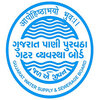

Q. > What is Viscosity, density, Newton's law of viscosity, surface tension? >Explain about cycles in I.C.Engine? > Draw the diesel & auto cycle? >Comparison between diesel & auto cycle
Questions related to fluid mechanics and cycles in I.C. Engine
Viscosity is the measure of a fluid's resistance to flow
Density is the measure of mass per unit volume of a substance
Newton's law of viscosity states that the shear stress between adjacent fluid layers is directly proportional to the velocity gradient
Surface tension is the force that causes the surface of a liquid to contract
Cycles in I.C. Engine include intake, compression, power, and exhaust
Diesel cycle has const...read more
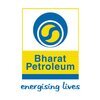
Asked in Bharat Petroleum

Q. What difference between earthing and neutral why we use neutral
Earthing and neutral are both important components of electrical systems, but they serve different purposes.
Earthing is the process of connecting electrical equipment and installations to the earth to prevent electric shock and protect against electrical faults.
Neutral is a current-carrying conductor that completes the circuit and provides a return path for the current back to the source.
Earthing is primarily for safety purposes, while neutral is for the proper functioning of...read more

Asked in Schneider Electric

Q. What are the basic electrical components that one should be knowledgeable about?
Basic electrical components include resistors, capacitors, inductors, diodes, and transistors, essential for circuit design and functionality.
Resistors: Limit current flow and divide voltages; e.g., used in LED circuits.
Capacitors: Store and release electrical energy; e.g., used in power supply filters.
Inductors: Store energy in a magnetic field; e.g., used in transformers.
Diodes: Allow current to flow in one direction; e.g., used in rectifiers.
Transistors: Act as switches or...read more

Asked in UltraTech Cement

Q. Why are the Moto terminal block connection wires labeled U1, V1, and W1?
U1, V1, W1 denote phases in a three-phase system, ensuring correct electrical connections for motors and equipment.
U1, V1, W1 represent the three phases in a three-phase electrical system.
These labels help in identifying the correct connections for motors.
For example, U1 is typically the first phase, V1 the second, and W1 the third.
Using these designations prevents phase confusion, ensuring proper motor operation.

Asked in Century Enka

Q. What is IOT, Cloud, Flipflops , Types of Flip-flop,truth table of Gates
IOT stands for Internet of Things, Cloud computing is a technology that allows access to data and applications over the internet, Flip-flops are digital circuits used in electronics.
IOT (Internet of Things) refers to the network of physical devices connected to the internet, enabling them to collect and exchange data.
Cloud computing involves storing and accessing data and programs over the internet instead of a computer's hard drive.
Flip-flops are digital circuits used to sto...read more

Asked in Airports Authority of India

Q. What is DPC? And how it's quantity is calculated?
DPC stands for Damp Proof Course. It is a barrier in a building to prevent moisture from rising through the walls.
DPC is usually made of materials like bitumen, plastic sheets, or metal strips.
The quantity of DPC required is calculated based on the length and width of the walls where it needs to be installed.
The thickness of the DPC also plays a role in determining the quantity needed.
For example, if a wall is 10 meters long and the DPC needs to be 150mm thick, the quantity r...read more
Graduate Apprenticeship Trainee Jobs




Asked in Schneider Electric

Q. What knowledge do you have regarding computers and document management?
I have a solid understanding of computer systems and document management practices, essential for efficient data handling.
Proficient in Microsoft Office Suite (Word, Excel, PowerPoint) for document creation and data analysis.
Experience with cloud storage solutions like Google Drive and Dropbox for document sharing and collaboration.
Familiar with document management systems (DMS) such as SharePoint for organizing and retrieving files.
Knowledge of file formats (PDF, DOCX, XLSX)...read more

Asked in Hindustan Petroleum

Q. What do you know about HPCL?
HPCL is a leading oil and gas company in India.
Hindustan Petroleum Corporation Limited (HPCL) is a Navratna Central Public Sector Enterprise in India.
It is a leading oil and gas company with a strong presence in refining, marketing, and distribution.
HPCL operates two major refineries in Mumbai and Visakhapatnam, with a total refining capacity of over 18 million metric tonnes per annum.
The company has a wide network of retail outlets and LPG distributors across the country.
HPC...read more
Share interview questions and help millions of jobseekers 🌟

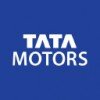
Asked in Tata Motors

Q. Tell me about Tata motors ,what does if manufacturers??
Tata Motors is a leading Indian automotive manufacturing company known for producing a wide range of vehicles including cars, trucks, buses, and defense vehicles.
Tata Motors is the largest automotive company in India.
It manufactures a variety of vehicles such as passenger cars (e.g. Tata Tiago, Tata Nexon), commercial vehicles (e.g. Tata Ace, Tata Prima), and defense vehicles (e.g. Tata Safari Storme).
The company has a global presence with operations in various countries incl...read more

Asked in UltraTech Cement

Q. What is GRR, and why is it used in the industry?
GRR (Gage Repeatability and Reproducibility) assesses measurement system variability in industrial processes.
GRR evaluates the precision of measurement systems, ensuring consistent results.
It identifies sources of variation, such as operator differences or equipment inconsistencies.
For example, in manufacturing, GRR helps ensure that measurements of part dimensions are reliable.
A low GRR indicates that the measurement system is capable and suitable for quality control.

Asked in Hindalco Industries

Q. 1. Type of equilibrium in the Thermo dynamics system.
There are three types of equilibrium in thermodynamics: thermal equilibrium, mechanical equilibrium, and chemical equilibrium.
Thermal equilibrium occurs when two systems are at the same temperature and no heat flows between them.
Mechanical equilibrium occurs when there is no net force acting on a system, resulting in no movement.
Chemical equilibrium occurs when the rates of forward and reverse reactions are equal, resulting in no overall change in concentrations of reactants ...read more

Asked in Bharat Electronics

Q. What kind of product are you manufacturing?
We are manufacturing electronic devices for home and office use.
Our products include smart home devices, routers, and modems.
We focus on creating user-friendly and efficient products.
Our devices are designed to improve connectivity and productivity.
Examples of our products include smart thermostats, wireless speakers, and network extenders.
Asked in Steel And Industrial Forgings

Q. Which occurs first, stress or strain?
Stress happens before strain.
Stress is the force applied to an object, while strain is the deformation that results from that force.
Stress causes strain, so stress must happen first.
For example, if you pull on a rubber band, the stress you apply causes the rubber band to stretch, which is the strain.
In engineering, stress and strain are important concepts for designing structures that can withstand external forces.

Asked in Century Enka

Q. Global Effect of Russia Ukraine war on Indian Economy
The Russia-Ukraine war can have a negative impact on the Indian economy due to rising oil prices, disruptions in trade, and geopolitical tensions.
Rising oil prices due to supply disruptions from Russia, a major oil exporter
Disruptions in trade with both Russia and Ukraine, affecting imports and exports
Geopolitical tensions leading to uncertainty in global markets and investment decisions

Asked in Sunbeam Auto

Q. What are the different types of welding?
There are several types of welding, including arc welding, MIG welding, TIG welding, and spot welding.
Arc welding uses an electric arc to create heat and join metals.
MIG welding uses a wire electrode and a shielding gas to create a weld.
TIG welding uses a tungsten electrode and a separate filler material.
Spot welding is used to join two or more metal sheets together at specific points.
Asked in Steel And Industrial Forgings

Q. Different types of weldings and its applications
Different types of welding include MIG, TIG, Stick, and Flux-Cored welding, each with unique applications.
MIG welding is commonly used for automotive and construction applications.
TIG welding is often used for precision work on thin materials like aluminum.
Stick welding is a versatile method used for welding thicker materials in outdoor environments.
Flux-Cored welding is ideal for welding in windy or dirty conditions.

Asked in NxtWave

Q. What is your AIM?
My aim is to become a skilled professional in my field and contribute to the growth and success of the organization I work for.
To gain practical experience and knowledge through the Graduate Apprenticeship Trainee program
To develop strong technical and interpersonal skills
To actively contribute to projects and tasks assigned to me
To learn from experienced professionals and mentors
To continuously improve and stay updated with industry trends and advancements
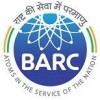
Asked in BARC

Q. What is the Ferranti effect?
Ferranti effect refers to the phenomenon where voltage increases along a long transmission line due to capacitive charging.
Occurs in long transmission lines, especially under light load conditions.
Caused by the line's capacitance, which leads to voltage rise at the receiving end.
More pronounced in high-voltage AC systems.
Example: A long overhead transmission line may show a voltage increase at the far end compared to the sending end.
Asked in Steel And Industrial Forgings

Q. Different types of forging and applications
Forging is a process of shaping metal by applying compressive force. Different types of forging are used for different applications.
Open-die forging: used for large parts like shafts and cylinders
Closed-die forging: used for small parts like bolts and fittings
Roll forging: used for long parts like rails and bars
Impression-die forging: used for complex shapes like gears and engine parts
Precision forging: used for high-precision parts like aerospace components
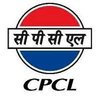
Asked in Chennai Petroleum Corporation

Q. What are the parts of a transformer?
A transformer consists of key components that facilitate the transfer of electrical energy between circuits through electromagnetic induction.
Core: Made of laminated silicon steel to reduce energy losses.
Windings: Primary and secondary coils that transfer energy; e.g., copper or aluminum wire.
Insulation: Materials like oil or paper to prevent short circuits and ensure safety.
Tank: Enclosure that houses the core and windings, often filled with insulating oil.
Cooling System: He...read more

Asked in Chennai Petroleum Corporation

Q. What are the types of DC motors?
DC motors are classified into several types based on their construction and operation, including series, shunt, and compound motors.
Series DC Motor: High starting torque, used in cranes and electric trains.
Shunt DC Motor: Constant speed, used in fans and blowers.
Compound DC Motor: Combines series and shunt characteristics, used in elevators.
Permanent Magnet DC Motor: Uses permanent magnets for field generation, used in small appliances.
Separately Excited DC Motor: Field windi...read more
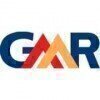
Asked in GMR Group

Q. What is the skin effect?
Skin effect is the tendency of alternating current to flow near the surface of a conductor, increasing resistance at higher frequencies.
Occurs in conductors carrying alternating current (AC).
At higher frequencies, current density is greater near the surface.
Example: In a copper wire, AC flows more on the outer surface than in the center.
Skin depth is the distance from the surface where current density falls to 37% of its value at the surface.
Skin effect increases resistance a...read more

Asked in BKT Tyres

Q. What is mass transfer?
Mass transfer is the movement of substances from one place to another due to a concentration gradient.
Mass transfer involves the transfer of mass or substances, such as molecules or ions, from one phase to another.
It occurs due to a difference in concentration or partial pressure between the two phases.
Examples of mass transfer include the diffusion of gases in air, the movement of solutes in a liquid, and the evaporation of a liquid into a gas.
Mass transfer is important in v...read more
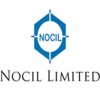
Asked in National Organic Chemical Industries

Q. What are centrifugal pumps?
Centrifugal pumps are devices that use centrifugal force to move fluids through a system.
Centrifugal pumps are commonly used in industries such as oil and gas, water treatment, and chemical processing.
They consist of an impeller that rotates to create centrifugal force, which pushes the fluid towards the pump outlet.
The fluid enters the pump through the suction inlet and is accelerated by the impeller.
The kinetic energy of the fluid is then converted into pressure energy as i...read more

Asked in National Organic Chemical Industries

Q. What is vacuum distillation?
Vaccum distillation is a process that separates liquids based on their boiling points under reduced pressure.
Vaccum distillation is used to purify liquids with high boiling points or heat-sensitive compounds.
It involves heating the liquid in a distillation flask under reduced pressure to lower its boiling point.
The reduced pressure allows the liquid to vaporize at a lower temperature, preventing thermal degradation.
The vapor is then condensed and collected as a purified liqui...read more

Asked in Tata Advanced Systems

Q. What is Hooke's Law?
Hooke's law states that the force needed to extend or compress a spring by a certain distance is proportional to that distance.
Hooke's law is a principle of physics that states the force needed to extend or compress a spring by a certain distance is directly proportional to that distance.
The formula for Hooke's law is F = kx, where F is the force applied, k is the spring constant, and x is the displacement of the spring from its equilibrium position.
Hooke's law is used in var...read more

Asked in UltraTech Cement

Q. Assess communication skills and behavior.
Effective communication skills are essential for collaboration and success in any professional environment.
Active Listening: Demonstrating understanding by summarizing what others say, e.g., 'So, what you're saying is...'
Clear Articulation: Expressing ideas clearly, e.g., using simple language to explain complex concepts.
Non-Verbal Cues: Maintaining eye contact and using appropriate gestures to enhance the message.
Empathy: Showing understanding of others' feelings, e.g., 'I c...read more
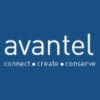
Asked in Avantel

Q. Explain antenna signals.
Antenna signals refer to electromagnetic waves transmitted and received by antennas for communication purposes.
Antenna signals are used to transmit and receive information wirelessly.
They can be used for various purposes such as radio broadcasting, television broadcasting, cellular communication, and satellite communication.
Different types of antennas are used for different applications, such as dipole antennas, parabolic antennas, and Yagi antennas.
Antenna signals can be aff...read more

Asked in National Organic Chemical Industries

Q. What is a Venturi?
A venturi is a device used to measure the flow rate of a fluid by creating a pressure difference.
A venturi consists of a narrow throat section and wider inlet and outlet sections.
As fluid flows through the venturi, its velocity increases in the narrow throat, causing a decrease in pressure.
The pressure difference is measured and used to calculate the flow rate of the fluid.
Venturis are commonly used in industries such as HVAC, water treatment, and automotive.
For example, a ve...read more

Asked in Tata Motors

Q. What is a transformer?
A transformer is an electrical device that transfers electrical energy between circuits through electromagnetic induction.
Transforms voltage levels: steps up or steps down voltage.
Consists of primary and secondary coils wound around a core.
Used in power distribution systems to manage voltage levels.
Example: A step-down transformer reduces high voltage from power lines for household use.
Example: A step-up transformer increases voltage for transmission over long distances.
Interview Questions of Similar Designations
Interview Experiences of Popular Companies






Calculate your in-hand salary
Confused about how your in-hand salary is calculated? Enter your annual salary (CTC) and get your in-hand salary


Reviews
Interviews
Salaries
Users










